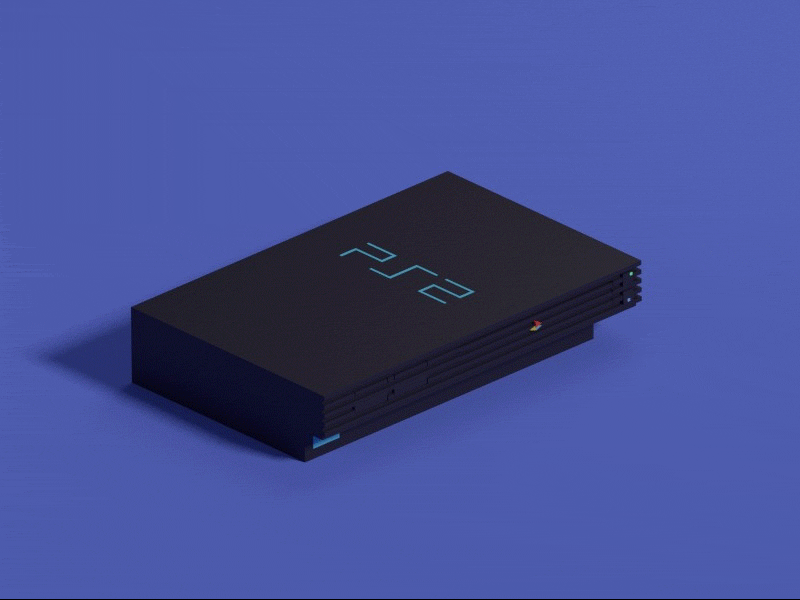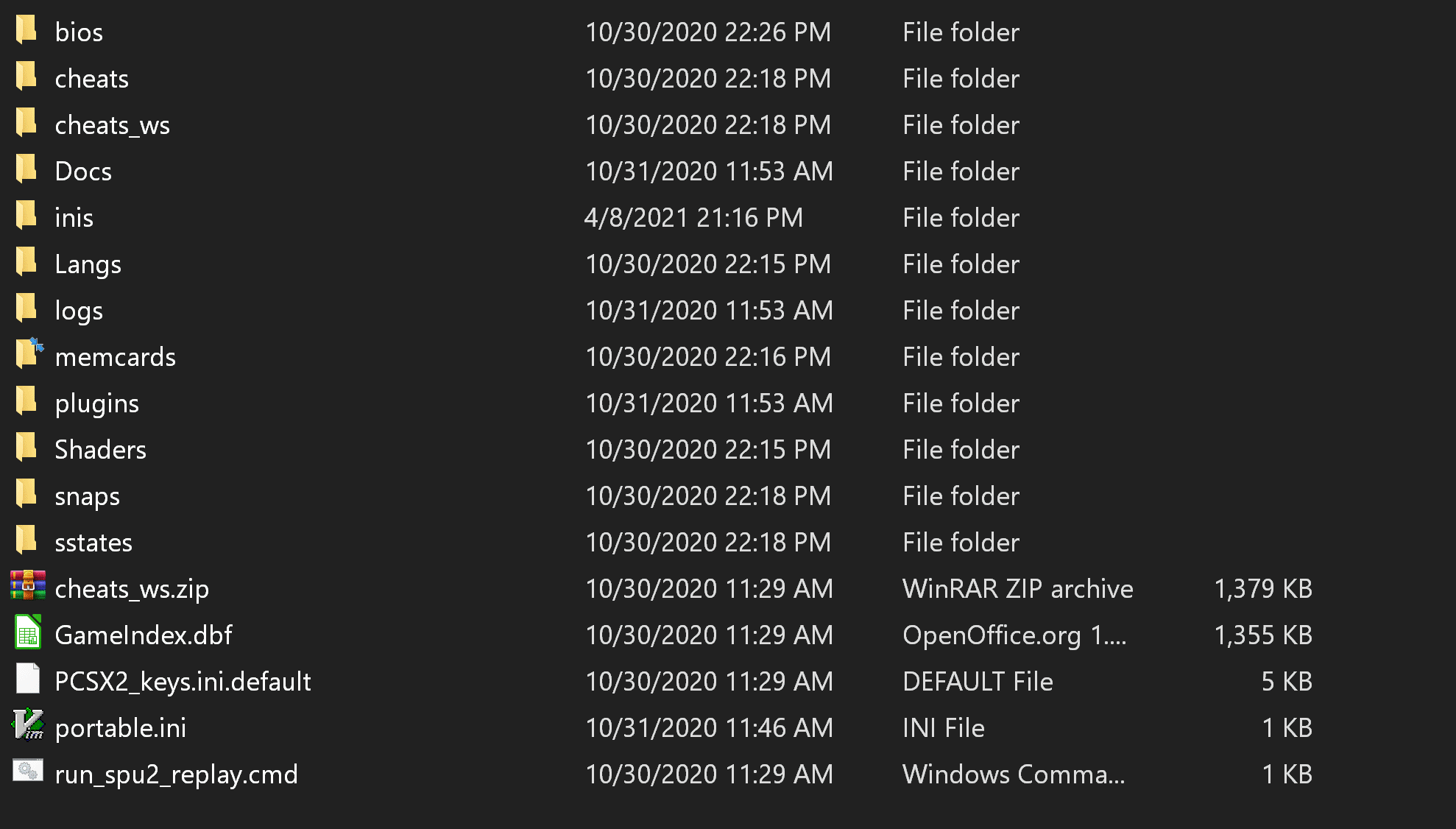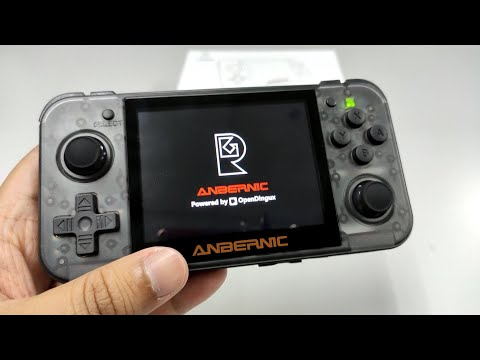
PCSX2 Alpha core available for Windows now!
Today we’re releasing an alpha version of the PCSX2 libretro core on the buildbot. It’s available for Windows only right now, but the same core has been tested to work on Xbox One/Series systems as well.
Important things to know
- Create the following directory in your system directory – “pcsx2”. You can put all the asset files there from your regular PCSX2 install. See pic below for an example.

You need a working BIOS inside
/pcsx2/bios. PCSX2, unlike Play!, will not work without a real BIOS. - It’s still an alpha version. Things are rough around the edges. Expect bugs and things to be incomplete.
- There’s a working OpenGL renderer and a Direct3D11 renderer option. Direct3D 11 renderer can be faster than OpenGL but also has less features. Pick whichever works best for you. On Xbox you will only be able to use Direct3D11 anyways.
- This core uses the x86_64 dynarec which was added to PCSX2 a year ago. It is still less compatible than the 32bit x86 dynarec in PCSX2, so keep that in mind. It’s for similar reasons that the software renderer right now won’t work (it’s not compatible yet with x86_64, not in upstream either).
- There’s a bug that can happen right now upon closing content or exiting RetroArch with the PCSX2 core on Windows – the RetroArch process might not completely cleanly shut itself off and you might still be able to see a 0% CPU process remaining in the Task Manager. We have not been able to figure out how to fix that yet as the PCSX2 codebase is a definite case of ‘here be dragons’, but for now when this happens, you can just bring up the Task Manager and close it manually. It shouldn’t have a real detriment on performance but it is of course far from ideal and hopefully something we can fix soon with the help of some contributors. We have found this happens the most with the Direct3D 11 renderers.
- Switching resolution at runtime right now can be a bit unstable, so does switching fullscreen resolution. We might just make resolution switching require a restart since this tends to be too unstable for now.
Update policy for this core
Hard-forked core for now. Govanify is going through many (necessary) refactors in PCSX2 upstream to make the code more portable, and he has also expressed his interest in an upstreamable libretro core somewhere down the line when the final refactoring of the GUI is complete. So either of two things can happen when that happens, if this is more closely aligned to upstream core is better in every way including performance, this will be replaced. If not, we will likely have two cores, one being the upstream-friendly core and this being the hard-forked one. As of this moment a lot of work remains to be done on PCSX2 to sort out all the internals that are chockful of nonportable code. Therefore, for now, the experimental PCSX2 core kinda is doing its own thing. PCSX2 still has a lot of inherently nonportable code in it, from WxWidgets to libglib. It’s for that reason that we don’t have a Linux core yet on our buildbot. We hope that we will be able to figure out a proper portable core for Linux users soon.
Expect a lot of Quality of Life enhancements to this core soon. We wanted to share this with you now rather than sit on it for even longer, now that it’s on the buildbot we can at least push regular updates to it, people can report issues and developers can contribute. Everyone wins.
Play! (experimental PlayStation2 emulator) is back on the buildbot!
The Play! libretro core is back on our buildbot! It took some time for this to be readded to our modern new buildbot but here it is!
Available right now for: Android (AArch64/ARMv7/x86), macOS (Intel), Linux (32bit/64bit), and Windows (32bit/64bit).
Update policy for this core
Upstream. Updates are pulled straight from the upstream repository.
DuckStation/SwanStation core updated
The DuckStation/SwanStation core has been updated to a build from a week ago.
Update policy for this core
This will remain a shallow fork and attempts are being made to make the surface area for patches small so that we can easily pull in updates. Some new contributors have jumped onboard and they want to ensure this core remains updated.
Mainline MAME available for iOS11 and up/tvOS !
The mainline MAME core is now available for iOS and tvOS users! It is also available for Mac Intel x64 users, and we hope that we can make it available for ARM Mac users soon as well.
Also important to note we will be updating to version 0.330 soon.
Update policy for this core
This is pretty much a shallow fork. It just attempts to pull in the latest changes from upstream without making many changes.
gpSP (Game Boy Advance emulator)
Many changes have been made under the hood to significantly increase performance of gpSP. One of the big changes that led to at least a 5-6% performance improvement was the removal of libco (a library used for cooperative threading). 3DS users especially should be in for a treat with gpSP, but realistically everyone benefits across the board, whether you’re on an ARM or x86 system. We can quite comfortably state you will be hard pressed to find a better and more well performing version of this emulator anywhere else right now.
* Support for generic MIPS (including Dingux)
* Built-in BIOS that ships internally and requires no external files/dependencies
* Removal of libco (5-6% perf or so) and some performance fixes for x86/arm/mips (for perf)
* Fixed the x86 dynarec and the ARM dynarec, that were pretty much broken. Good speedups (or power savings on portable devices)
Immediate roadmap for gpSP: PS2 support (coming soon (TM)), rumble and tilt sensor support, AARch64 dynarec (mid-term goal)
One caveat right now is that these changes have unfortunately caused it to no longer work on PS Vita. However, the plan is to fix this soon, and for this to be only a temporary thing.
Update policy for this core
Hard fork, self-maintained.
Picodrive (Sega Mega Drive/Master System/Sega CD/32X emulator)
This has received many speed improvements and enhancements courtesy of irixx, 32X support has seen plenty of improvements, and the results speak for themselves. Works wonderfully on OpenDingux-based devices and PS Vita, some of the lower end systems out there.
A separate blog article might be written about all the changes soon.
Update policy for this core
Hard fork, self-maintained
FCEUmm (Nintendo Entertainment System emulator)
Some important new updates from New Rising Sun that adds more mapper support (PR notes are his):
Add features to mapper 332/BMC-WS:
- implement additional outer bank bit to support multicarts twice as large as WS-1001 (“Super 40-in-1”)
- implement CNROM-128/-256 mode using two or four inner banks switched via CNROM-like latch at CPU $8000-$FFFF
- implement solder pad/DIP switch change via soft-reset, resulting in different multicart menus
- soft-resetting resets to menu as on real hardware, not just the currently-selected game.
Tested with the HH-xxx series of multicarts, some of which available on LIBG, as well as the previously-supported WS-1001.
I wanted to add a couple of multicart mappers that use the J.Y. Company ASIC and fix a few bugs while doing so. I ended up rewriting the whole thing by porting the code from NintendulatorNRS. This improves the modularity of the code by wrapping the PRG and CHR sync functions with mapper-specific ANDs and ORs, which is necessary for multicart use, and hopefully improves the readability (though I understand that’s a matter of taste). Previous save states had to be invalidated in any case since the previous code only saved four of the eight CHR LSB registers.
Source organization changes:
Combine duplicate code from 90.c, bmc13in1jy110.c and sc-127.c into one new file jyasic.c.
Features/corrections:
Window text not shown at the beginning of Tiny Toon Adventures 6 (“Baabs is dreaming about becoming an actress”).
Bad cursor sprite on “Mighty Morphin’ Power Rangers III”‘s title screen.
Some mapper 295 multicarts not working, such as SC-126.
Added Adder to ALU (not used by any game).
Add IRQ mode 3 (writes to CPU address space).
Save all eight CHR LSB registers (previous code only saved the first four).
Ignore writes to x800-xFFF except 5800 and C800, needed for Final Fight 3 on SC-128.
Allow DIP setting to be read from all possible locations: 5000, 5400, 5C00, necessary for a few multicarts.
Adds the following mappers: 282, 358, 386, 387, 388, 397, 421.
Remaining issues:
IRQ timing is not as perfect as the NintendulatorNRS code from which it was taken, which had been verified against real hardware. This is due to there not being a true “PPU Read Handler” in the mapper interface (as far as I can see), and PA12 timing in the core PPU emulation being not accurate enough to replace the “clock IRQ eight times per horizontal blanking” solution that I kept from the previous code.
There remains one J.Y. ASIC-using mapper: 394, which mounts both the J.Y. ASIC and an MMC3 clone and uses extra register bits to switch between the two. That is a bit difficult to code and will be for another day.
Successfully tested with:
Mapper 35:
Warioland II (JY039)
Mapper 281:
(晶太 JY-052) 1996 Super HiK 4-in-1 – 新系列阿拉丁雙Ⅲ组合卡
(晶太 JY-052) 1997 Super HiK 4-in-1 – 新系列叢林泰山組合卡
(晶太 JY-053) 1996 Super HiK 4-in-1 – 新系列獅子王超强组合卡
(晶太 JY-054) 1996 Super HiK 4-in-1 – 新系列快打旋風Ⅱ组合卡
(晶太 JY-054) 1997 Super HiK 4-in-1 – 超級新系列大金鋼4代組合卡
(晶太 JY-055) 1996 Super HiK 4-in-1 – 新系列阿拉丁Ⅲ.致命武器組合卡
(晶太 JY-066) 1996 Power Rangers HiK 4-in-1 – 新系列金鋼戰士專輯組合卡
(晶太 JY-066) 1997 Power Rangers HiK 4-in-1 – 新系列金鋼戰士專輯組合卡
(晶太 JY-068) 1996 Super HiK 3-in-1 – 新系列阿拉丁Ⅲ.激龜Ⅲ組合強卡
(晶太 JY-080) 1996 Super HiK 3-in-1 – 新系列中國兔寶寶全輯組合卡
(晶太 JY-088) 1996 Super HiK 5-in-1
Mapper 282:
(晶太 JY-062) 1996 Super Mortal Kombat Ⅲ Series – 新系列真人快打三代組合卡 18-in-1
(晶太 JY-064) 1996 新超強 18-in-1 阿拉丁組合系列卡 – Super Aladdin Ⅲ Series Card
(晶太 JY-069) 1996 Super HiK 4-in-1 – 新系列忍Ⅲ.沼澤怪獸組合卡
(晶太 JY-070) 1996 Super HiK 3-in-1 – 新系列眞人Ⅲ.兔寶寶組合強卡
(晶太 JY-071) 1996 Super HiK 3-in-1 – 新系列眞人Ⅲ.小新2.明王組合卡
(晶太 JY-079) 1996 Super HiK 3-in-1 – 新系列眞人Ⅲ.金鋼4.蜜蜂組合卡
(晶太 JY-084) 1996 Photo Gun 9-in-1
(晶太 JY-098) 1997 Super HiK 6-in-1
(晶太 JY-101) 1997 Super HiK 18-in-1
(晶太 JY-105) 1997 Super HiK 21-in-1
(晶太 JY-114) 1998 Super HiK 5-in-1
(晶太 SC-128) Super 25-in-1 Final Fight
(晶太 SC-130) Super Photo-Gun 13-in-1
Mapper 295:
(晶太 JY-010) Super Ball Series 18-in-1
(晶太 JY-014B) 1996 Soccer 7-in-1 – 足球專輯 (rev0)
(晶太 JY-014B) 1996 Soccer 7-in-1 – 足球專輯 (rev1)
(晶太 JY-050) 1997 Super HiK 8-in-1 (rev1)
(晶太 JY-095) 1997 Super HiK 4-in-1
(晶太 JY-096) 1997 Super HiK 7-in-1
(晶太 JY-097) 1997 Super HiK 8-in-1
(晶太 JY-099) 1997 Super HiK 4-in-1
(晶太 JY-100) 1997 Super HiK 5-in-1
(晶太 JY-109) 1997 Super 9-in-1
(晶太 JY-110) 1997 Super 13-in-1
(晶太 SC-126) 方塊專集 HiK Block 14-in-1
Mappers 90/209/211:
(晶太 CK-124) Super HiK 8-in-1
(晶太 JY-118) 1998 Super 3-in-1
(晶太 JY-120A) 1998 Super 45-in-1
(晶太 JY-122) 115 超強合卡
Aladdin – 阿拉丁
Aladdin III, Popeye II꞉ Travels in Persia
Contra Spirits (1995)
Donkey Kong Country 4
Final Fight 3
Mickey Mania 7
Mighty Morphin’ Power Rangers III
Mighty Morphin’ Power Rangers IV꞉ The Movie
Mike Tyson’s Punch-Out!! (JY021)
MK3 – Special 56 Peoples
Mortal Kombat 2-in-1
Mortal Kombat II Special
Super Aladdin꞉ The Return of Jafar
Super Mario & Sonik 2 (rev1)
Super Mario World
Super Mortal Kombat 2-in-1
Tiny Toon Adventures 6
中國兔寶寶 Rabbit
真 Samurai Spirits 2꞉ 覇王丸地獄変
鉄拳 – Tekken 2
mappers 358/386/387/388/397/421:
(晶太 JY-016) 1997 Super Game 7-in-1
(晶太 JY-056) 1996 Super HiK 4-in-1 – 新系列真人快打Ⅱ特別版 (rev0)
(晶太 JY-056) 1996 Super HiK 5-in-1 – 新系列眞人快打Ⅲ56人特別版 (rev1)
(晶太 JY-082) 1996 Soccer 6-in-1
(晶太 JY-087) 1996 Super HiK 4-in-1
(晶太 JY-089) 1996 Super HiK 4-in-1
(晶太 JY-090) 1996 Super HiK 5-in-1
(晶太 JY-093) 1996 Super HiK 4-in-1
(晶太 JY-094) 1996 Super HiK 4-in-1
(晶太 JY-113) 1998 Super HiK 5-in-1
(晶太 JY-117) 1998 Super HiK 6-in-1
(晶太 SC-129) 98 街頭快打格鬥 15-in-1
bSNES HD Beta/bsnes mainline available for iOS/tvOS/ARM64 Mac
Widescreen SNES emulation on your iDevice and ARM Mac is now available!
Update policy for this core
Upstream, gets built straight from DerKoun’s upstream repository.
Genesis Plus GX Wide available for iOS/tvoS/ARM64 Mac
Another welcome addition to the Apple fold – the widescreen-enhanced version of Genesis Plus GX! For more on that, read this article here.
Update policy for this core
Hard fork, as it makes many sweeping changes to Genesis Plus GX to achieve widescreen support, which would make resyncing with upstream very hard to do.
Other cores which have received updates
Here is a list of other cores that have received updates, but for which we cannot post any changelogs due to lack of time. We might go into some more of the changes here later on.
Beetle PSX
FB Neo
MAME 2003 Plus
VICE
P-UAE (Amiga emulator)



